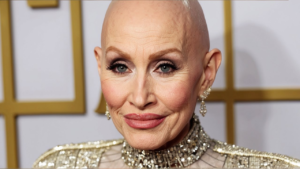Dolly Parton is a name that resonates far beyond the realm of country music. An icon known for her extraordinary talent, philanthropy, and distinctive style, Dolly’s image is as much a part of her brand as her music. For decades, one of the most recognizable features of that image has been her collection of large, blonde wigs. But recently, Dolly has opened up about what lies beneath the wigs and the reasons she’s worn them for so long, shedding light on a part of her life that has intrigued fans for years.
The Iconic Wigs
Dolly Parton’s wigs have been as much a part of her public persona as her rhinestone-studded outfits and catchy songs. From the very beginning of her career, Dolly’s hair has been a subject of fascination. Her wigs, often big and bold, have become synonymous with her stage presence, giving her a larger-than-life appearance that fans around the world have come to adore.

However, Dolly has always been open about the fact that her voluminous locks were not her natural hair. The wigs were a way for her to create a distinctive look that would set her apart in the entertainment industry. But why did she start wearing them in the first place?
In a candid interview, Dolly Parton revealed that her decision to start wearing wigs was born out of a simple necessity: the damage her natural hair endured due to the constant styling required for her performances and public appearances. In the 1960s and 1970s, big hair was the trend, and Dolly, like many women of that era, often subjected her hair to extensive teasing, curling, and spraying to achieve the desired look. Over time, this took a toll on her natural hair, leading her to explore other options.
Rather than continue to damage her natural hair, Dolly opted to wear wigs. This decision allowed her to experiment with different styles without the risk of further harming her hair. It also provided a practical solution for maintaining her image with less effort—wigs could be styled ahead of time and easily swapped out, making it easier for her to get ready for performances or appearances.
The Power of Transformation
For Dolly, wigs also became a powerful tool for transformation. She has often spoken about how they allow her to “become Dolly” when she steps on stage. The act of putting on a wig, along with her glamorous outfits and makeup, is part of a ritual that helps her get into character, transforming from Dolly Parton, the person, into Dolly Parton, the superstar.
But Dolly’s wigs are not just about creating a public image. They also represent a form of self-expression. Each wig is carefully chosen to complement her outfits and the mood she wants to convey. Over the years, her wigs have become a statement in themselves, reflecting her personality and the fun, flamboyant style that she has embraced throughout her career.





